8 Blogs That Will Kick-Start Your Creativity as a Product Designer

Finding the voices that personally resonate with you can be a crucial component when looking to improve your hard and soft skills. From boot camp graduates to industry veterans, a well-written or provocative article can help unlock new ideas, processes, or opinions. This is why embracing new perspectives is so important.
Having said that, we now have an endless amount of options to choose from when it comes to finding new sources of inspiration. It can be easy to find yourself quickly lost in the algorithm or feeling out of the loop in an ever-evolving and crowded digital space.
We have compiled a shortlist of 8 blogs that will serve as a baseline to help kick-start your creativity as a product designer in 2024.
Top Blogs for Product Designers
1. DESK
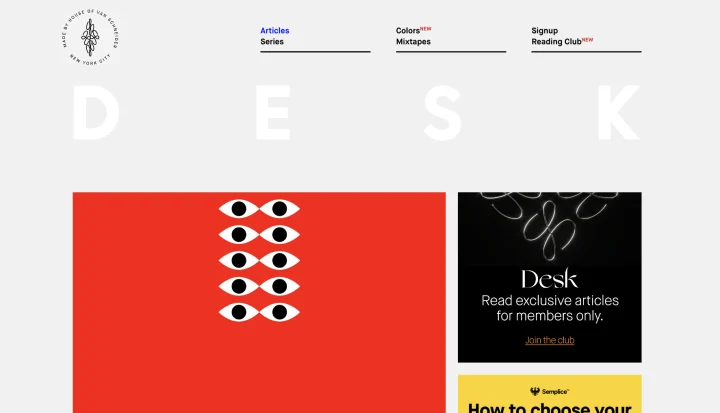


Founded in 2016, DESK covers topics across design, psychology, and productivity. In their own words, they aim “to create a resource for designers and makers to motivate, inspire, and just have fun.”
DESK is part of House of Van Schneider. A corner of the internet belonging to art director, thinker, and product designer Tobias Van Schneider. Tobias has developed products and services for clients such as Red Bull, Google, NASA, and Sony.
Why Desk?
Simply put, it’s a blog for designers, by designers. They write about a broad scope of topics that challenge you to perceive the world of design today in different ways. Why do you like what you like? What is good design? Should we be challenging the status quo? With contributions from a global team, DESK provides valuable insights from multiple perspectives. If you appreciate storytelling and the psychological aspects of design, this blog is for you.
Highlight:
Breaking the algorithm is a thought piece that serves as a reminder for us to stay curious. It offers to be proactive rather than reactive to the world around us and the content we consume.
2. Spotify Design
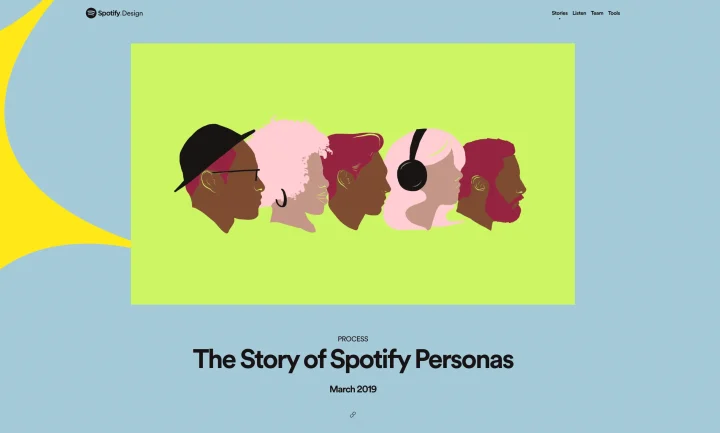


Spotify Design is a community that directly shares its processes with its audience. It offers a peek under the hood of a product used by millions, designed for multiple platforms, contexts, and countries.
Why Spotify Design?
With stories and curated playlists directly from the team, you get a glimpse of what it takes to make Spotify successful. There are regular spotlight segments from team members, workshop guides, how-to segments on navigating your career, and much more. You can find takeaways here, no matter where your interests or strengths lie. With content broadly surrounding people and best practices, Spotify Design can give you a glimpse of what it’s like to work there. Any music-loving designer will surely appreciate their insights and focus on culture.
Highlight:
One of the best examples is a recent post detailing the collaborative processes between design and engineering. It explains to the reader what to avoid and what to strive for.
3. UX Collective
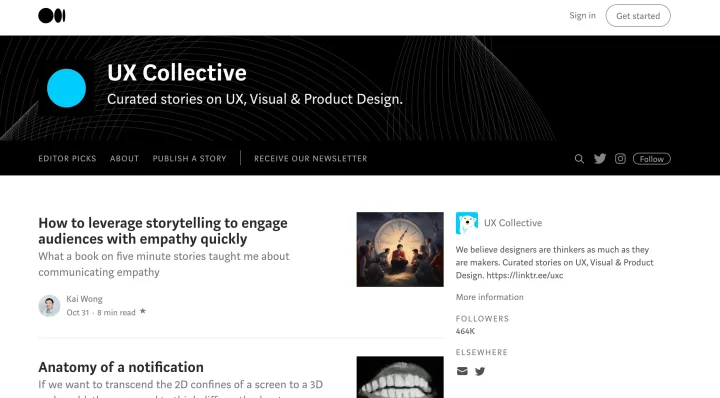


UX Collective is the largest independent design publication on the design landscape, hosted on Medium. Curated with content that aims to provoke change, it is a nucleus for critical thinking and shared experiences.
UX collective believes that knowledge sharing is the key to making the design community grow stronger in the future.
Why UX Collective?
As mentioned, UX Collective hosts stories, case studies, and curated essays to ensure quality. The beauty of the platform is that it gives anyone a voice to highlight their interests and passions. Not only that, but you can engage with and contribute to conversations that senior designers, major tech companies, and product makers start globally. It’s up to the reader to find what resonates with them here. If you want to open your mind to new ideas and join a more extensive conversation within the design community, look through UX Collective.
Highlight:
In line with the focus of this article, here is an exciting piece that highlights a few essential lessons in creativity that you can take from the film Everything, Everywhere, All at Once.
4. Webflow
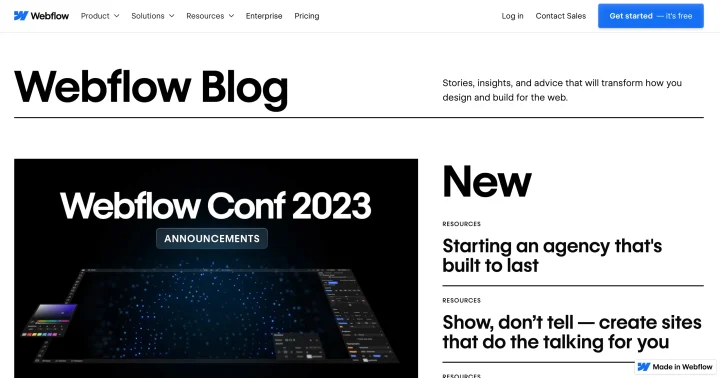


Webflow offers anyone the ability to build a website without code. It’s a powerful tool that goes way beyond standardized templates. Thousands of leading organizations trust it globally to deliver stunning and immersive experiences.
Why Webflow?
As a result of this, Webflow’s blog offers fantastic insights on different topics. Ranging from web typography to the best responsive web design guidelines, you can find various topics there.
The blog also covers emerging design trends and featured articles that discuss design processes, resources, and other forms of inspiration – not to mention their e-books on the no-code revolution, as well as direct links to their free Webflow University courses. This blog is beneficial, especially for people passionate about digital design. I recommend it for those who want to level up their technical abilities, touching on new trends, best practices, and the complexities of the web.
Highlight:
This article demonstrates how creative you can get with menus and navigation styles. It also explains how you can add aesthetic flair while solidifying a memorable experience for the user.
5. Codrops
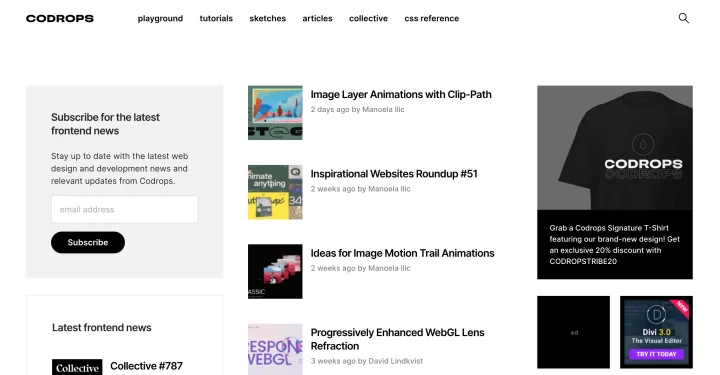


Codrops is a platform created to elevate and inspire the knowledge growth of contemporary designers, developers, and web professionals. By exploring the latest trends, issues, and topics in the digital field – they make it easy to stay up-to-date with everything.
The platform has been consistent with its output since 2009. It’s offering freebies, articles, tutorials, and sketches, too. So, it’s clear that Codrops remains dedicated to delivering high-quality, innovative content. Their articles aim to spark the imagination of their readers.
Why Codrops?
There is a vibrant community full of resources to explore here. There are weekly round-ups with posts detailing how to rewrite the source code of PlayStation classics, what Slack would look like, redesigned from the ground up, and portfolios portraying exceptional animation, composition, and style.
The playground section offers an array of “web experiments, concepts, and layouts that push the boundaries of traditional design and showcase the latest in animation techniques.” It’s a great source of creative fuel for anyone looking to challenge the status quo and try new techniques.
Highlight:
Here is an excellent look into unique on-scroll column and row animations.
6. DesignerUp
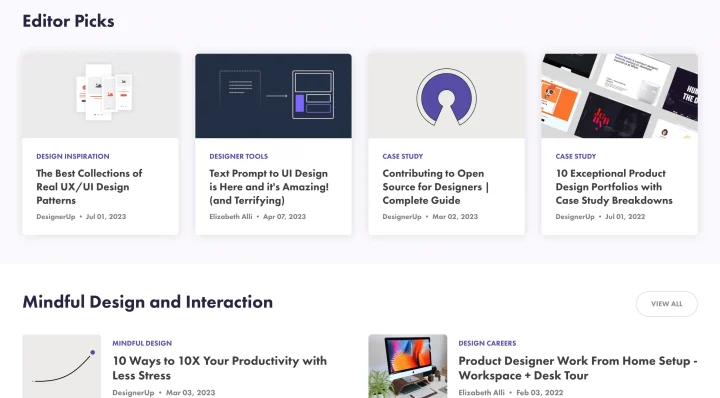


DesignerUp is a platform that shares access to high-quality resources for designers to enhance their skill sets. They host free video tutorials, templates, podcasts, and articles. DesignerUp has adopted a philosophy highlighting how design is an extension of ourselves. They hope to provide a means of allowing us to express that notion.
You will notice that each post is presented and formatted with attention to detail and clarity that allows the process of finding inspiration to feel effortless. With the content offering alone, it feels like a resource that could answer any question you might have, whether it’s about removing the background from an image quickly or if you want to know what the best show on Netflix is about tech start-ups.
Why DesignerUp?
DesignerUp will be particularly helpful if you are at the start of your design journey. Everything that you need to begin learning is there: courses, templates, freebies, but most importantly, knowledge. It’s trusted and used by industry leaders from Google and Asana to Figma.
Highlight:
Many things can easily fracture our focus and concentration in multiple directions. This affects our productivity, resulting in stress, and ultimately stifles creativity. DesignerUp outlines 10 effective strategies to enhance your workflow and manage your priorities better.
7. The UX Design Institute
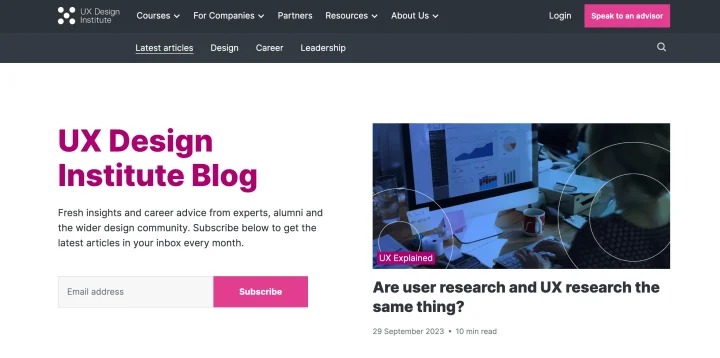


With an offering of various university credit-rated courses, The UX Design Institute is globally recognized. It aims to reset the standard when it comes to UX education.
They offer a free introductory course on UX and consistently host renowned guest speakers in webinars. Most recently, they have had a conversation with Don Norman on designing for a better world.
Why UX Design Institute?
The blog itself can be handy if you are seeking career tips or advice. In particular, their Expert Interviews segment focuses on people. They give you an insight into the day-to-day processes and workflows of designers operating in various fields.
Highlight:
Here is an excellent example of incorporating effective and consistent branding within content design. As the article says, “Consistent branding is a crucial pillar of good content design—and, therefore, good UX.”
8. UX Studio
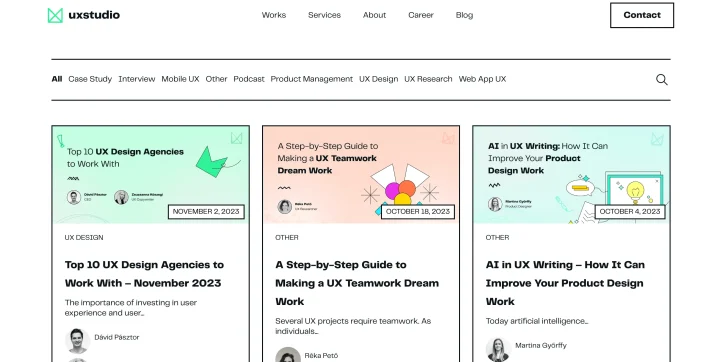


At UX studio, we closely keep our ears to the ground regarding new trends, methods of working, and the different perspectives of designers and researchers alike. On our blog, you will find plenty of resources to guide you on your journey – whether you’re looking for some of the best design agencies to work with around the globe or are on the hunt for tips to improve your Figma workflow.
Why UX Studio?
At UX studio, we are on a mission to create impactful solutions, make people’s lives easier, and help businesses surpass themselves. This is clear in everything we communicate through our blog. With the input of different voices around the studio, we are sure you’ll have a few takeaways to boost your creativity.
Highlight:
In one of our previous articles, we gathered some great tools to make your life easier as a designer.
Summary
Staying engaged with current trends can be intimidating in the design world when everything seems to move so fast. Each of the resources mentioned above offers its own unique insights. They can serve as a baseline to ensure you maintain your creative energy and output.
Want to learn more?
If you want to learn more about UX design and our experiences working on projects, make sure you check out our UX design blog. We share valuable insights, tips, and best practices to help you grow your skills and knowledge on the topic.
